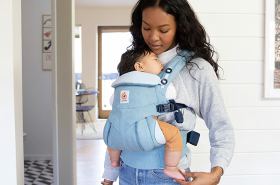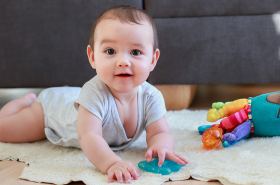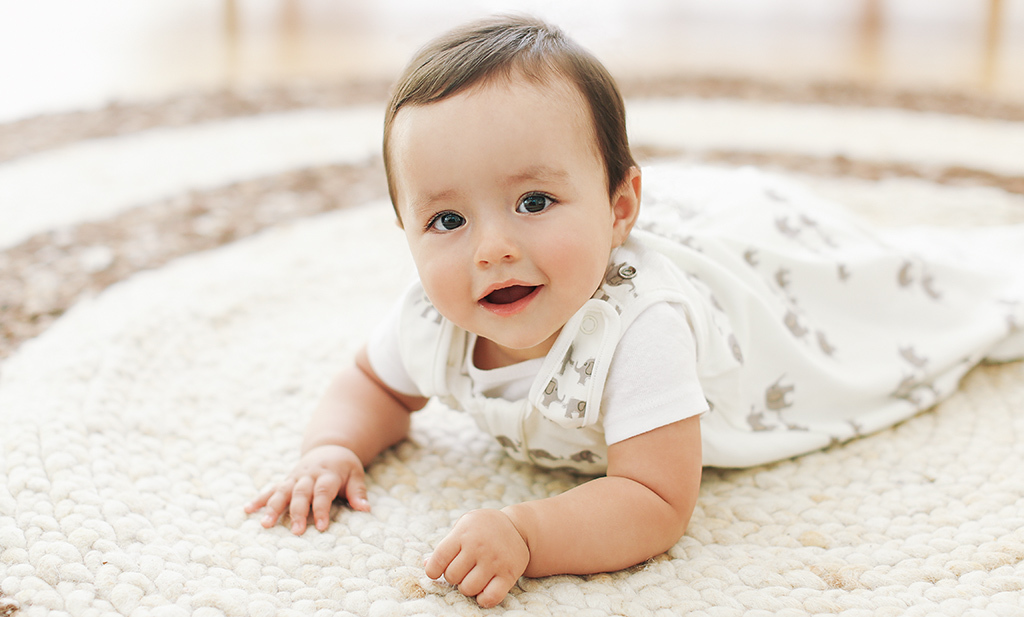
Plagio… what? Only a few of you probably know something about this term. Some of you might know what’s behind it, or at least have heard of it. If not, a little tip: it has something to do with the shape of your child’s head. Well our babywearing consultant Mieke will explain the rest to you.
When a baby is born they sometimes need an assisted delivery. After this you might see in the first few days a mark/bruise or a slight deformation of the head.
Deformation of the head?
Yes. When a baby is born, all the bones are not yet fully ossified, but are somewhat malleable. Of course, otherwise the child would not fit through the birth canal and it would be more difficult to grow. The head in particular grows rapidly in the first few months of life. The deformation caused by the assisted delivery has completely disappeared after a few days, and the slight deformation that occurs with every baby after it has passed through the birth canal has also completely disappeared after a few weeks. Today’s baby wearing tip is about other head deformations that only occur after birth.

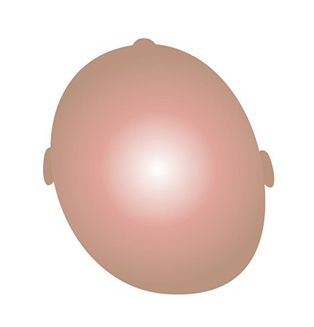
Since 1992, when the recommendation to place infants in the supine position (lying on your back) to prevent sudden infant death syndrome (SIDS) was introduced worldwide, there have been significantly more babies who develop a locally flattened head. This is due to the fact that gravity acts on the head and “flattens” the skull plates that are still malleable in the area of the contact surface. If the back of the head is almost symmetrically flattened in the middle, this is called brachycephaly. However, most babies have a favourite side to turn their heads to when they are lying on their backs. This then leads to the head flattening on one side. In technical terms, this is called position-related plagiocephaly or Flat Head Syndrome.
If parents notice that their child is developing a head that is flattened on one side and (almost) always looks to one side, it does not hurt to bring this up at the next examination with your midwife or health professional. Sometimes this is actually an indication of a blockage in the head joint, which can be remedied either by an osteopath or manual therapist. However, blockages or head joint malposition’s (KiSS) are usually also noticeable through other symptoms such as frequent crying or severe restlessness, crooked posture, breastfeeding problems and/or colic.
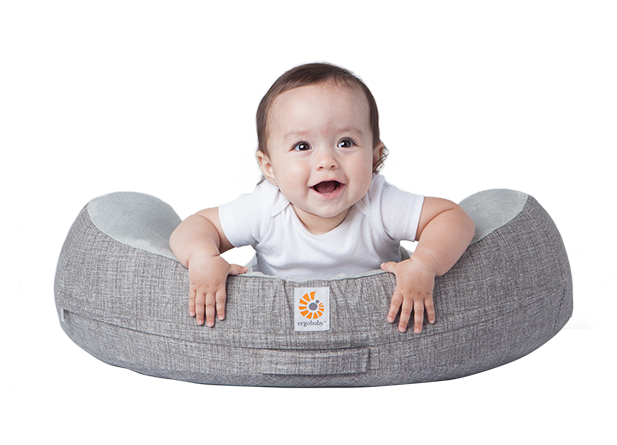
But even if the baby just has a favourite side, parents should try to encourage their baby to turn its head in the other direction so that the neck muscles do not develop differently and thereby possibly shift the cervical vertebrae. Here are a few simple tips:
Babies often spend more than 20 hours a day on their backs, whether awake or asleep. Bed, playmat, pram, bouncer, car seat… the simplest measure that parents can take is to use stimuli to encourage the child to turn their head to the unloved side and reduce the time that the child is on its back. So whenever the baby is awake, put it on its stomach again – preferably with its head turned to the unloved side. In addition, you can switch sides when feeding with the bottle just like you do when breastfeeding. And the most effective and easy way to integrate it into everyday life is to WEAR it!
Yes indeed. Wear is now also included in international guidelines (e.g. in the recommendation of the Australian Science Council) as a prevention against plagiocephaly. Because when you carry baby, not only is the effect of gravity on the back of your head automatically reduced. It is also one of the few occasions today when an infant can leave the horizontal position for any length of time. This is not only beneficial for the prevention of plagiocephaly, but it is also good for brain development, balance, communication and much more. And turning the baby’s head to the unloved side can also be gently encouraged by drawing the child’s attention or by turning the head to the unloved side as soon as the baby is asleep.


